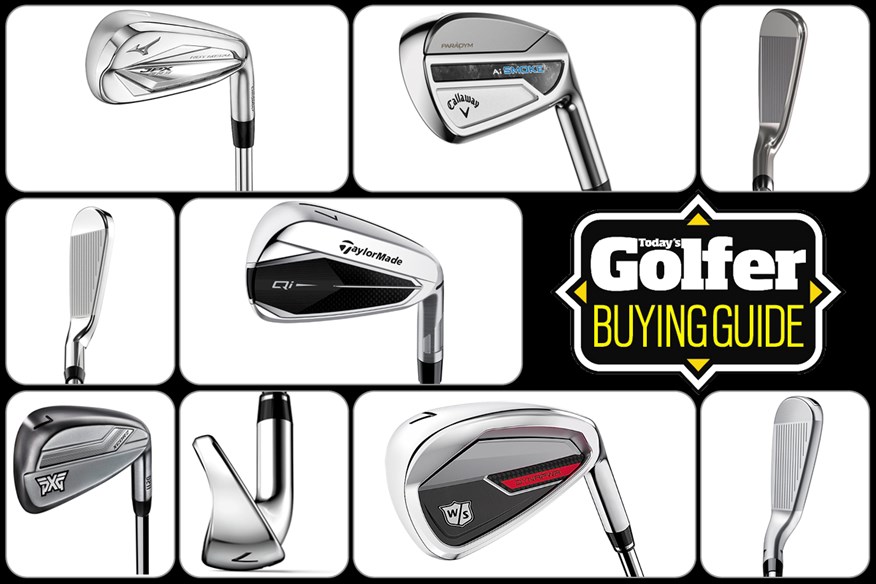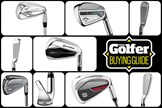Your Complete Guide: What are the Best Game-Improvement Irons in 2025 and Are They Right for You?
Last updated:
Game-improver irons offer help where we need it but also complement our natural games too. Let’s break down our best game-improver irons of 2025 and how they could work for you.
The best game-improver irons for 2025 hasn’t been an easy list to narrow down. With outstanding irons across the board, manufacturers are squeezing every last ounce of performance from their latest models.
The demands put on a game-improver iron don’t make identifying the best simple. If you’re buying a blade-style or players iron, you’re only really after one thing – consistency. It’s a similar story with beginner clubs, where getting airborne is the only real goal.
When looking at game-improver irons though, we’re trying to find a design that works for everything. We’re looking for our distance to be maximized within our speed. We want consistency from the product so we see predictable ball flights on the course. We need something that can help us in the now but also stay with us as we develop our golf game.
Looking at head design is a great starting point. Wide-sole irons are shaped like that to give more space for bringing weight lower in the head. As we bring weight lower, we also move the Center of Gravity down with it, which helps out with launching the ball higher as well as retaining more ball speed from thinner shots.
Narrower soles could help us with getting the club in behind the ball, especially if we’re shallow and don’t take many deep divots.
Different heads will use different materials in construction, affecting feedback and feel, as well as performance aspects like distance and straightness. Ultimately, as much as technology will help with these irons, the only real way to tell what will work best for you is to go and be fitted for them.
With that in mind, this is how we test irons to evaluate what we feel are the best performers of the year.
How we tested irons
We test 7-irons in a stock stiff flex steel shaft from any set, irrespective of what loft the iron may be. Shots are hit from a range mat into an indoor net, while our launch monitor keeps an eye on impact location and records how shots are launched into the air and where they go.
For each model tested we capture data for 12 shots our test pro is happy with. Only once all clubs within a test have been hit do we start looking at analyzing the data.
When analyzing our data carry distance is a huge factor as it’s important to many golfers on the golf course. For irons especially we also look very closely at backspin, peak height, and descent angle as these play a crucial role in being able to score on the golf course.
Virtually all golfers want a degree of forgiveness from their irons, so we also look at how far shots have traveled offline, and the difference between our tester’s longest and shortest hits.
Today’s Golfer is diligent with how we test equipment to ensure the highest standards for you.
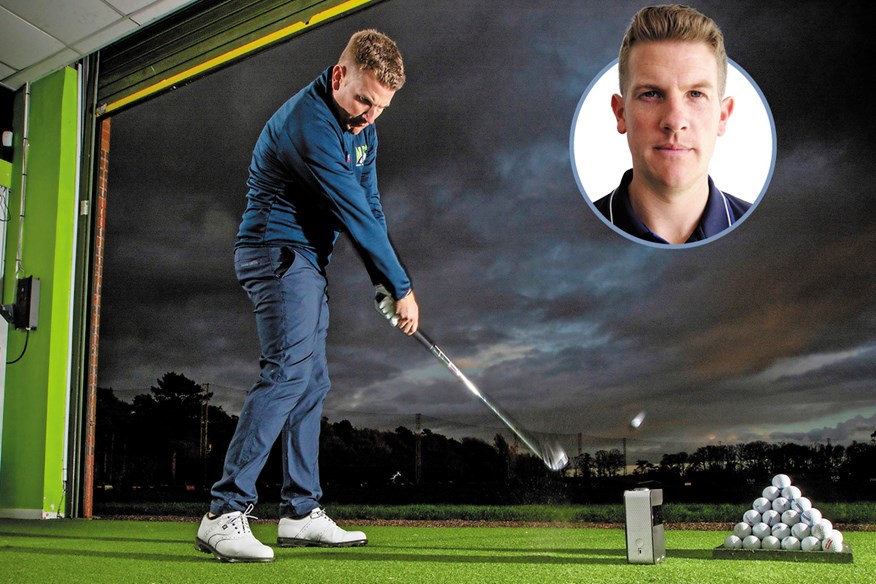
After testing was complete, these are our selections for the best game-improver irons of 2025.
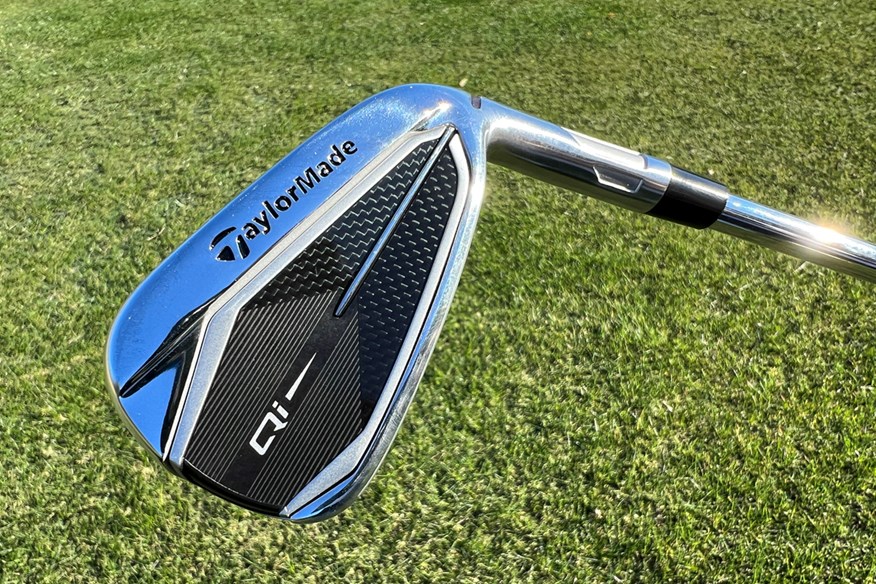

While the profile isn't as tight as some of the other irons in this category, the performance has been more than enough to make up for any small shortcomings in the looks department. Boasting composite construction badges and HYBAR Echo Dampeners, both designed to improve sound and feel, the feedback from the face is more akin to the P790 from Taylormade's roster.
FLTD (Flighted) CG locations are progressive, with the lowest points in the long irons and moving higher as we go shorter. The benefits I saw from this are that the 4 and 5-iron became much easier to launch and the 8-PW, typically wanting to fly to the moon in game-improver irons at higher speeds, were easy to keep to a penetrating flight that still had height.
Read our Full Review of the Taylormade Qi10 Irons.
TG Test Pro Data (28º):
Ball Speed: 129.2 mph | Backspin: 5065 rpm | Descent: 44.2º | Carry: 198 yds | Shot Area: 267.6 yds2
Pros
- Came out top for our 2024 mid-handicap irons test
- Feels softer than it looks like it should
- Great ball speed and height
Cons
- Slightly larger head than others in the category
| Lofts Available | 4-LW RH, 4-SW LH |
| Stock Shafts | KBS MAX MT 85 / Fujikura Ventus Blue TR / Fujikura Speeder NX TCS 40 |
| Stock Grip | Lamkin Crossline 360 |
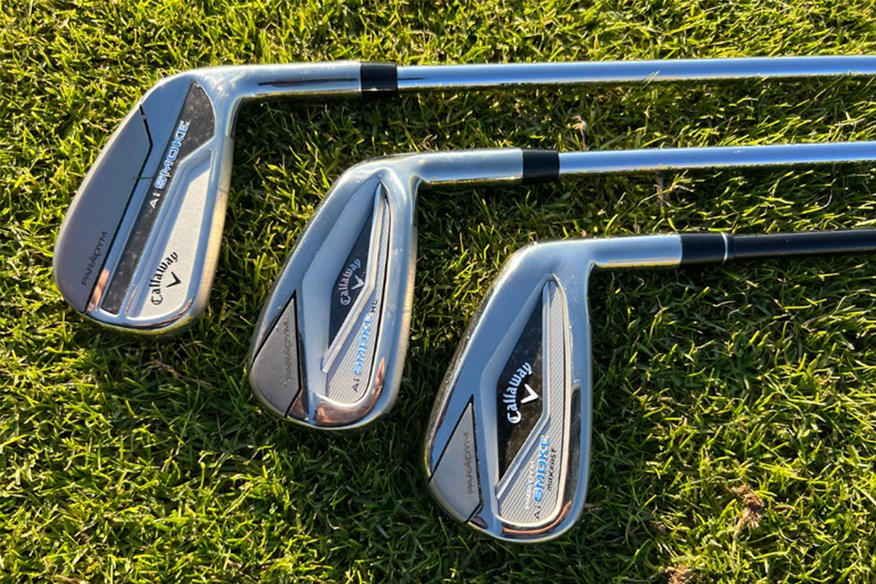

While discounting data isn't generally what we recommend, I do think it's worth pointing out that on a different day we may have seen a tighter dispersion circle from Callaway. With that in mind, you'll be struggling to beat this powerhouse.
A slimmer sole and top-line than most of its peers mean this head is extremely versatile, even in firmer conditions, and can very easily bleed into the edges of a players-distance iron.
With individual AI-designed faces (meaning every iron face is unique), the replacement for Callaway's 2023 model has technology, performance, and looks all in its favor - the only downside is stock shaft selection. Although any fitter will be able to offer you free. Of charge alternatives, I am slightly disappointed to only see high-launch steel and graphite shafts available off the shelf.
Read our Full Review of the Callaway Ai Smoke Irons.
TG Test Pro Data (28º):
Ball Speed: 130.6 mph | Backspin: 5311 rpm | Descent: 43.4º | Carry: 197 yds | Shot Area: 552.6 yds2
Pros
- Slimmer profile is great for golfers who take less divots
- Highest ball speed for mid-handicap irons
- Works for a wide array of handicaps
Cons
- Stock shaft selection isn't very deep
| Lofts Available | 4-SW RH&LH |
| Stock Shafts | True Temper Elevate MPH 95 / Project X Cypher 2.0 50,60,70 |
| Stock Grip | Lamkin Crossline 360 |
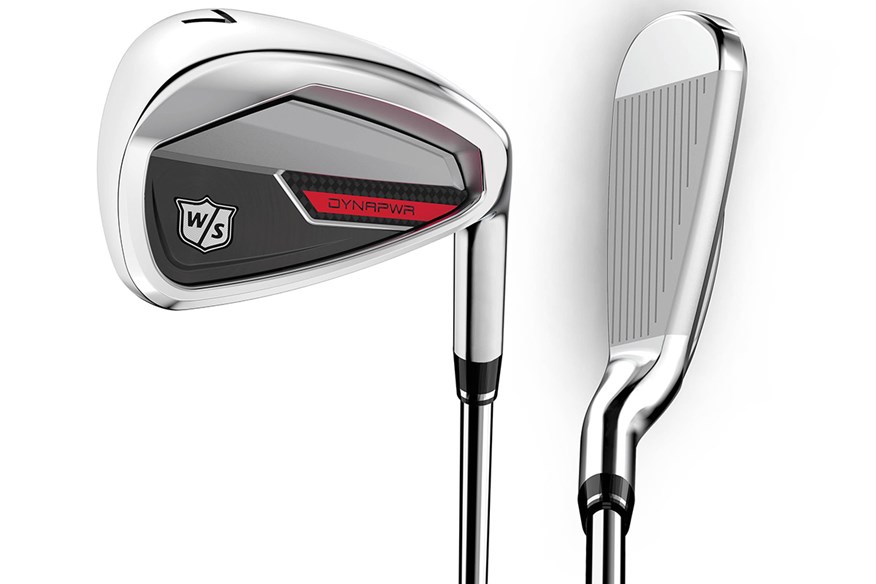

This has been one of my favorite irons to hit this year, just because it goes so damn far! The lower backspin may not suit every user, with slower swing speeds possibly struggling to get the most from its natural design (although ordering the irons 2º weak may help with that).
However, the forgiveness and straightness of this iron will mean, provided the small tweak, this is still an iron you'll want to test out.
A wider sole allows the Center of Gravity to be pushed low and back for an easier launch helping to alleviate the lower spin rates but that may also make this head harder to strike cleanly for golfers who hit the ball with a shallow range of attack.
Read our Full Review of the Wilson Staff Dynapower Irons.
TG Test Pro Data (27º):
Ball Speed: 127.8 mph | Backspin: 4910 rpm | Descent: 42.7º | Carry: 195 yds | Shot Area: 196.8 yds2
Pros
- One of the straightest irons we've tested
- Big power on offer
- Forgiveness is very high
Cons
- Not the best spinning iron
- Profile is quite large for a mid-handicap iron
| Lofts Available | 4-SW RH&LH |
| Stock Shafts | KBS MAX Ultralite / UST Recoil Dart 65 |
| Stock Grip | Lamkin Crossline 360 |
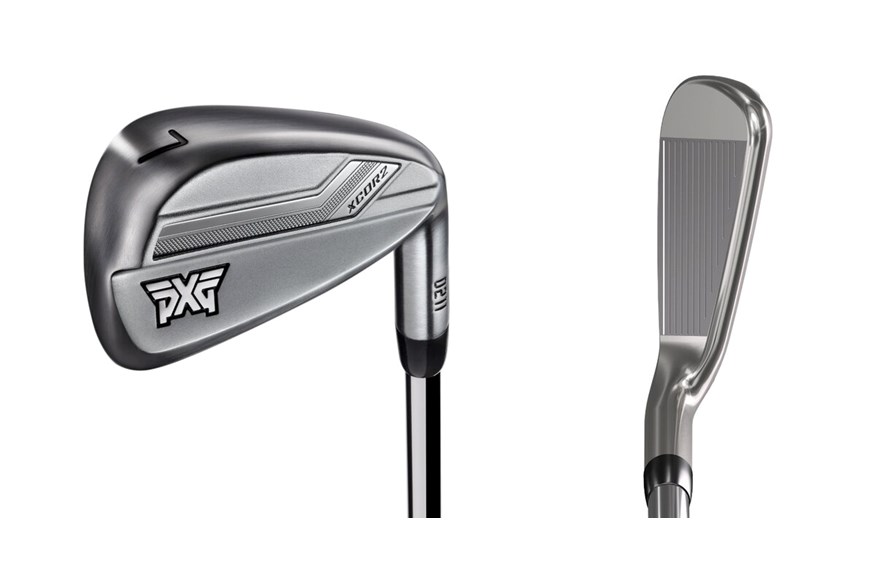

The 0211 range is simple, clean, and understated (as much as PXG clubs can be) which only enhances the reputation of the club, for me. I've enjoyed both putting these down at address as well as the feedback through impact, with shots feeling softer than expected from a hollow-body iron thanks to the XCOR2-filled internal cavity.
Available in two colorways, with Brushed Chrome or Xtreme Dark, the heads lack the adjustable back weight of the premium Gen 6 models but still offer several options of varied shafts included in the price.
'These Sticks Are Money, Baby!' is boldly emblazoned on PXG's website and, at this price point, you'd struggle to argue with that conclusion!
Read our Full Review of the PXG 0211 XCOR2 Irons.
TG Test Pro Data (28º):
Ball Speed: 130.1 mph | Backspin: 5057 rpm | Descent: 41.8º | Carry: 198 yds | Shot Area: 193.6 yds2
Pros
- Very high ball speed
- High dispersion consistency
- Option for color choice
Cons
- Lack adjustable head weight of premium PXG irons
| Lofts Available | 4-LW RH&LH |
| Stock Shafts | True Temper Elevate MPH 95g / KBS Tour / KBS $-Taper Lite / Mitsubishi MMC 70g / UST Mamiya Recoil DART 75g |
| Stock Grip | PXG Z5 Black |
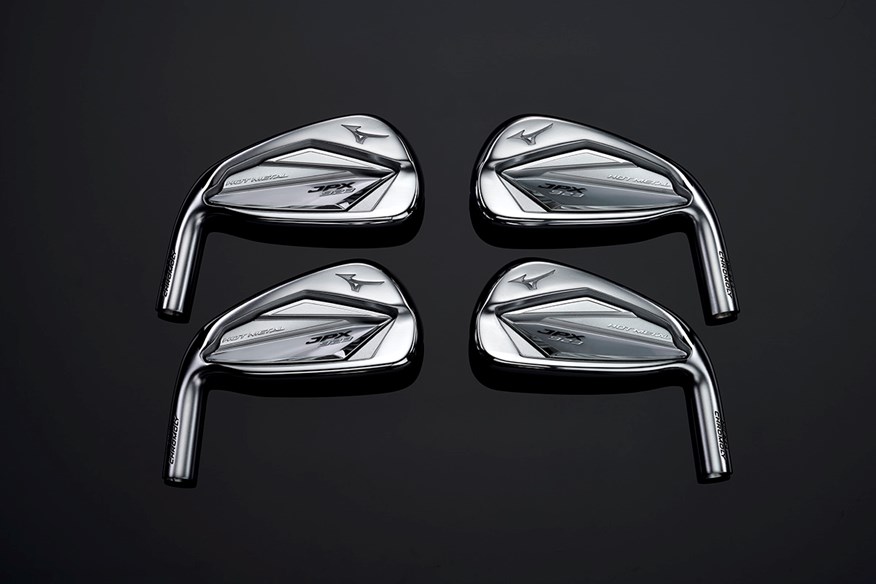

The JPX 923 series is built around two keys. The first is retaining the quality product they're known for. The second is versatility. The method chosen for creating said versatility is by expanding the options within the JPX series. With the 923 iteration, you now have the Tour, the Forged, and the Hot Metal models.
The Hot Metal irons then split into three versions. The Hot Metal HL (High Launch), the standard Hot Metal, and the Hot Metal Pro. All three are great options - the HL providing more height, the Pro providing less offset, and a slightly thinner topline - but our focus is on the standard 923 HM.
With a one-piece Chromoly construction, the Hot Metal prioritizes feel and control without sacrificing in distance either. One of the highest-spinning models we tested, this is a great option to both gain quality feedback on strikes while also giving you help to progress your golf. I love the feel of this one, especially when I don't find a perfect contact as it flies exactly as expected with minimal jarring vibration from the mis-strike.
Read our Full Review of the Mizuno JPX 923 Hot Metal Irons.
TG Test Pro Data (28.5º):
Ball Speed: 127.6 mph | Backspin: 5748 rpm | Descent: 44.2º | Carry: 190 yds | Shot Area: 243.1 yds2
Pros
- Great Mizuno feel
- Head options for different golfers needs
- A set to progress with
Cons
- Ball speed not the highest we've seen
| Lofts Available | 4-LW RH&LH |
| Stock Shafts | Mizuno offer 23 non-upcharge shafts |
| Stock Grip | Mizuno offer 26 non-upcharge grips |
FAQ: Frequently Asked Questions
Which brand of iron is best?
Every brand of iron makes a good product for someone! The only way to tell what works for you is by trying them out, but there will be something that works for you.
Is it worth getting fitted for clubs?
Absolutely! Think about how many golfers you know. How many swings do they all have? Do they all swing the same? Of course not, so why should a standard set of clubs work for all of you the same? The best way to find the right setup for you is buying going to be fitted.
How do I get more distance from irons?
There are three ways to get more distance. Increase your club head speed and how fast you swing. Play stronger lofted irons. Use your current power more efficiently. Go for a fitting to find which one will work best for you.
What are forged irons?
Forged irons are irons made from softer steel, typically 1020 or 1025 Carbon Steel although this isn’t always the case. These metals are compressed into shape instead of poured into a mold. Irons that are poured are called Cast Irons and are harder metals but also cheaper to manufacturer. Forged irons used to be marketed as feeling better but that’s not always the case and firmer might feel better for you anyway!
SUBSCRIBE TO TODAY’S GOLFER: Print and Digital access, discounts and rewards!
